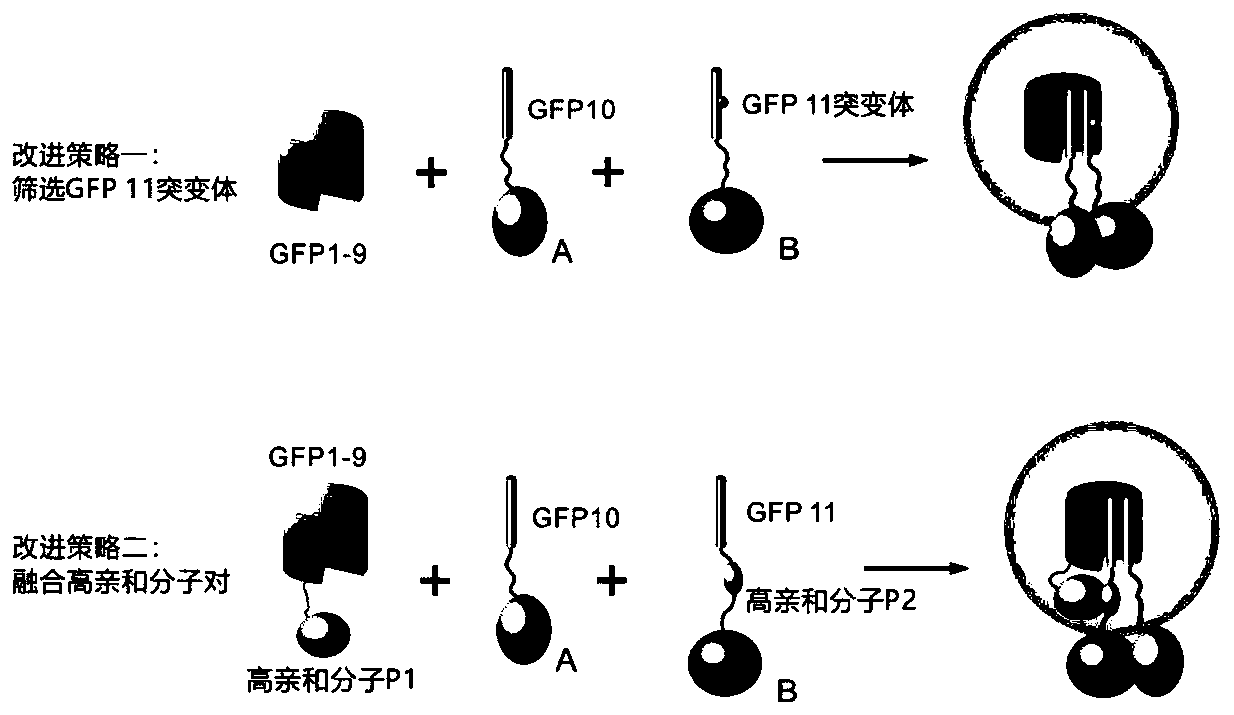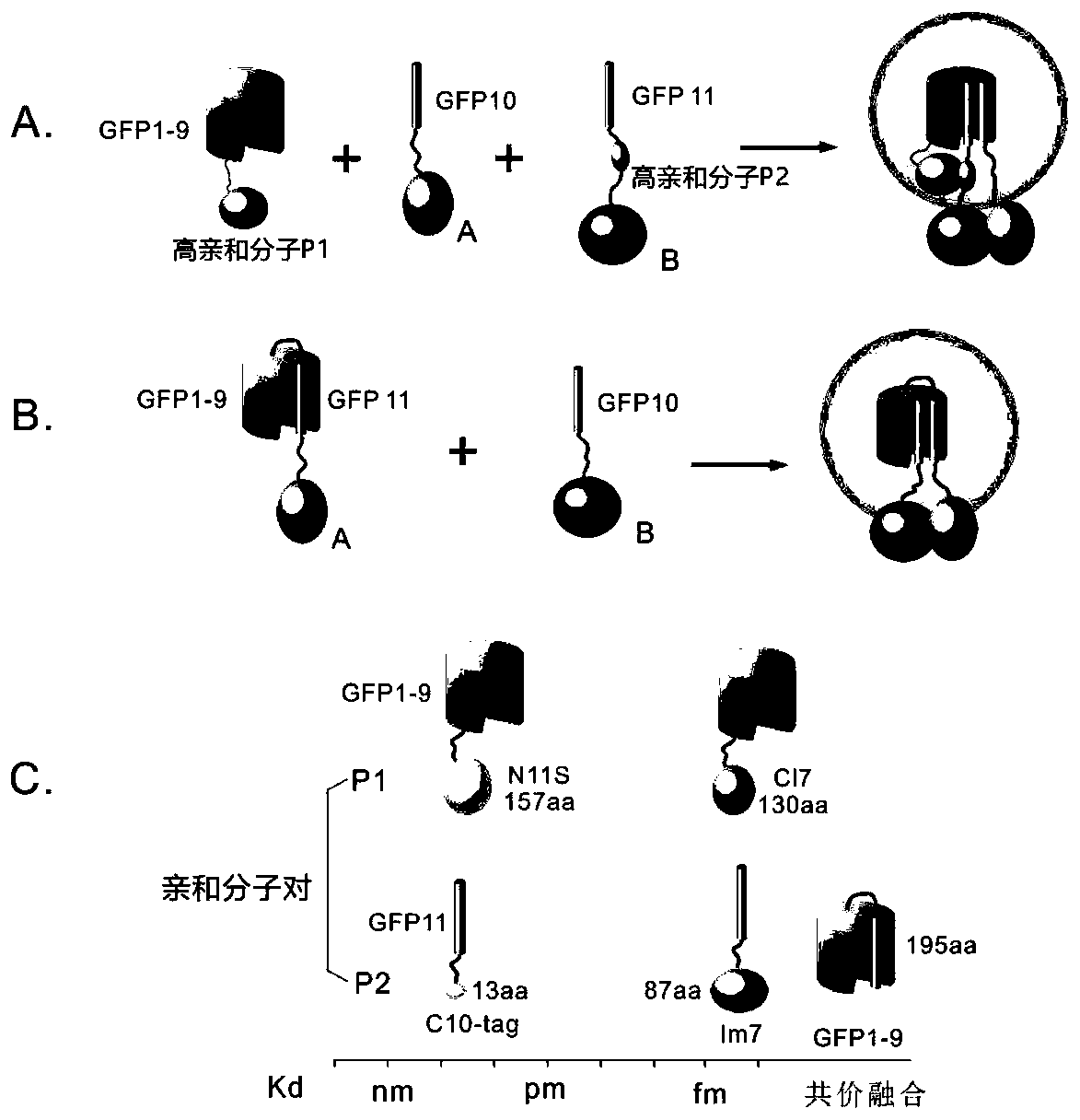Segmented green fluorescent protein system for protein interaction detection
A green fluorescent protein-protein interaction technology, applied in the field of molecular biology, can solve problems such as increased background and unsatisfactory results
- Summary
- Abstract
- Description
- Claims
- Application Information
AI Technical Summary
Problems solved by technology
Method used
Image
Examples
Embodiment 1
[0031] Example 1. Screening of GFP 11 mutants with improved affinity with GFP 1-9 by mutating GFP 11
[0032]The experimental scheme in this example is to perform saturation mutation on amino acids in different positions of GFP 11, and screen for GFP 11 mutants that can enhance the signal intensity of the three-segment sfGFP. We first constructed a three-segment sfGFP detection system based on the hepatitis B virus core protein HBc (two HBc monomers can bind to each other).
[0033] 1. Characterization of HBc monomer interactions using three-segmented sfGFP
[0034] Using HBc as a model, the three-point sfGFP system proposed by Waldo's research group was tested. This test needs to construct 3 kinds of plasmids, namely the plasmid expressing GFP 1-9 (PCH-GFP 1-9), the plasmid expressing GFP 10-HBc fusion protein (pGFP10-HBc), and the plasmid expressing GFP11-HBc fusion protein (pGFP11-HBc). The following is the specific construction process:
[0035] 1.1 Construction of pla...
Embodiment 2
[0069] Example 2. Increasing the signal intensity of the three-segment sfGFP system through high-affinity molecule pairs
[0070] Since the first embodiment is unsuccessful, we continue to try the aforementioned second strategy. We hope that by fusing a pair of high-affinity molecules on GFP1-9 and GFP11, respectively, the affinity of GFP1-9 and GFP11 can be improved, and the signal intensity of the whole system can be increased. The principle is as follows image 3 Shown in A: The final fluorescent signal is enhanced by increasing the affinity between GFP1-9-P1 and GFP11-P2-B by fusing a pair of high-affinity molecules P1 and P2 to GFP1-9 and GFP11, respectively . We selected two molecular pairs with affinity, their molecular weights are different, and the affinity between molecular pairs is also different, Kd is pM level and fM level, which are N11S and C10 respectively (refer to Dixson et al., NanoLuc ComplementationReporter Optimized for Accurate Measurement of Protein I...
PUM
 Login to View More
Login to View More Abstract
Description
Claims
Application Information
 Login to View More
Login to View More - R&D
- Intellectual Property
- Life Sciences
- Materials
- Tech Scout
- Unparalleled Data Quality
- Higher Quality Content
- 60% Fewer Hallucinations
Browse by: Latest US Patents, China's latest patents, Technical Efficacy Thesaurus, Application Domain, Technology Topic, Popular Technical Reports.
© 2025 PatSnap. All rights reserved.Legal|Privacy policy|Modern Slavery Act Transparency Statement|Sitemap|About US| Contact US: help@patsnap.com



